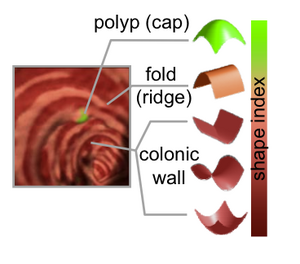Collaboration: COPDGene
Back to NA-MIC_External_Collaborations
Contents
Abstract
Chronic Obstructive Pulmonary Disease (COPD) is the fourth leading cause of death in the United States and an important public health issue [8]. An estimated 24 million individuals in the U.S. may be affected by COPD [12]. Both the number of affected individuals and the number of deaths from COPD are expected to increase as the population ages [11]. COPD is a heterogeneous condition, with a variety of disease-related phenotypes [3,16]. Better understanding of the disease mechanisms is needed to develop effective treatments and prevention strategies. To accomplish this, we need improved understanding of the etiology of COPD, clinical classifications of the disease that are biologically and medically coherent, and knowledge of genetic factors that influence risk of COPD.
COPD is strongly associated with smoking, but only a minority of smokers will develop COPD, suggesting that there may be unique genetic differences among individuals leading to greater susceptibility to the most adverse effects of cigarette smoke in some individuals [10]. Relatives of COPD patients show an increased prevalence of airflow obstruction, which supports a role for genetic factors predisposing smokers to COPD [1,9,13]. Smokers with first degree relatives affected by COPD have two to three times the risk of developing disease [13,17]. Genetic factors have been associated with response to lung volume reduction surgery [6] as well as specific patterns of emphysema [2] and degree of functional impairment [5]. Estimated heritability for decline in lung function with age using parent-offspring pairs who both smoke are 0.18 for FEV1 and 0.39 for FVC [4]. Because COPD is likely the result of multiple genes, some of which may interact with environment risk factors (primarily smoking), estimates of heritability that do not include the effects of smoking on lung function are likely to underestimate the true genetic component in COPD. The Genetic Epidemiology of COPD (COPDGene®) Study was designed to identify genetic factors in COPD, to define and characterize disease-related phenotypes and to assess the association of disease-related phenotypes with the identified susceptibility genes. This multi-center study is funded by the National Heart, Lung and Blood Institute (NHLBI). A key feature of the project is to enroll a large cohort (10,000) of subjects, spanning the breadth of disease severity including smokers and non-smokers without COPD as controls. Two groups are being studied: Non-Hispanic Whites and Non-Hispanic African Americans.
The primary goals of the study are: 1) Phenotypic characterization of COPD subjects using computed tomography, as well as clinical and physiological measures, to separate the COPD syndrome into significant distinct subtypes that may be more etiologically homogeneous. 2) Utilize genome-wide association studies to provide insight into the genetic risk factors for COPD and its subtypes.
Specific Aims
Specific Aim 1: Cohort Building. The enrollment of 10,000 subjects is balanced with 2/3 non-Hispanic White and 1/3 African American, distributed across the full spectrum of disease severity and both genders (Table 4). The cohort is specifically being recruited for a genome wide association study (GWAS) analysis and is large enough to provide adequate statistical power to detect genes exerting modest effects on risk.
Specific Aim 2: Characterization of Subtypes of COPD. The main characterization of COPD subtypes will be based on the presence and severity of parenchymal and airway disease based on inspiratory and expiratory high-resolution chest CT scans.
Specific Aim3: Genome-Wide Association Study (See Figure 2). The initial study plan for the GWAS involves four phases. There will be an initial GWAS on a balanced group of 3000 subjects of current or former smoker case and control subjects (2000 White and 1000 African American) in Phase 1. Statistical signals (SNPs in or between genes) identified in Phase I will be confirmed in Phase II with a custom SNP array that will provide greater coverage of genes. In Phase III SNPs in genes/regions identified and confirmed in Phases I and II will be investigated with regional fine mapping and tests of associations to identify causal genes. The final group of candidate genes will be replicated in other COPD cohorts as Phase IV. With continued improvements in SNP genotyping technology additional phases (beyond Phase 1) may be analyzed at the genome-wide level.
Specific Aim 4: Natural history of COPD and Risk Factors for Progression. The COPDGene cohort will be established for longitudinal follow-up with regular contact made to determine mortality, comorbid disease events and disease status based on clinical and/or chest CT evidence of progression. Population.
Grant #
The project described is being supported by Award Numbers U01HL089897 and U01HL089856 from the National Heart, Lung, And Blood Institute. The content is solely the responsibility of the authors and does not necessarily represent the official views of the National Heart, Lung, And Blood Institute or the National Institutes of Health.
